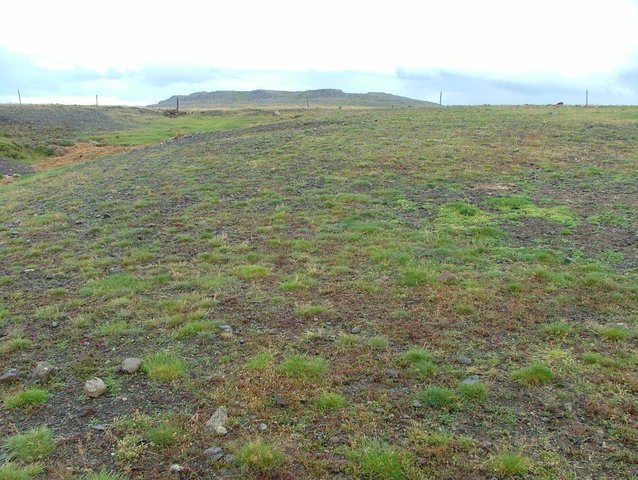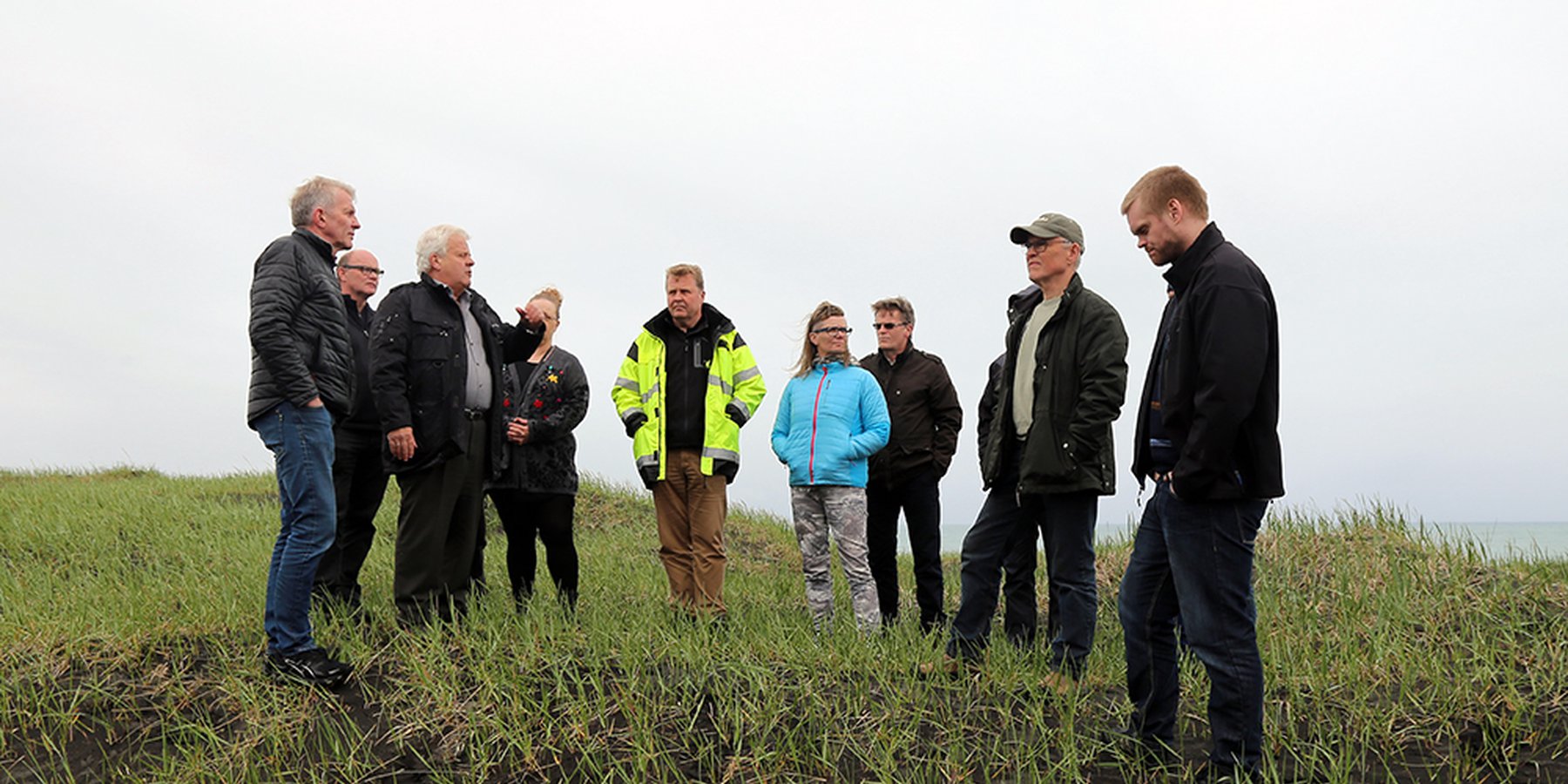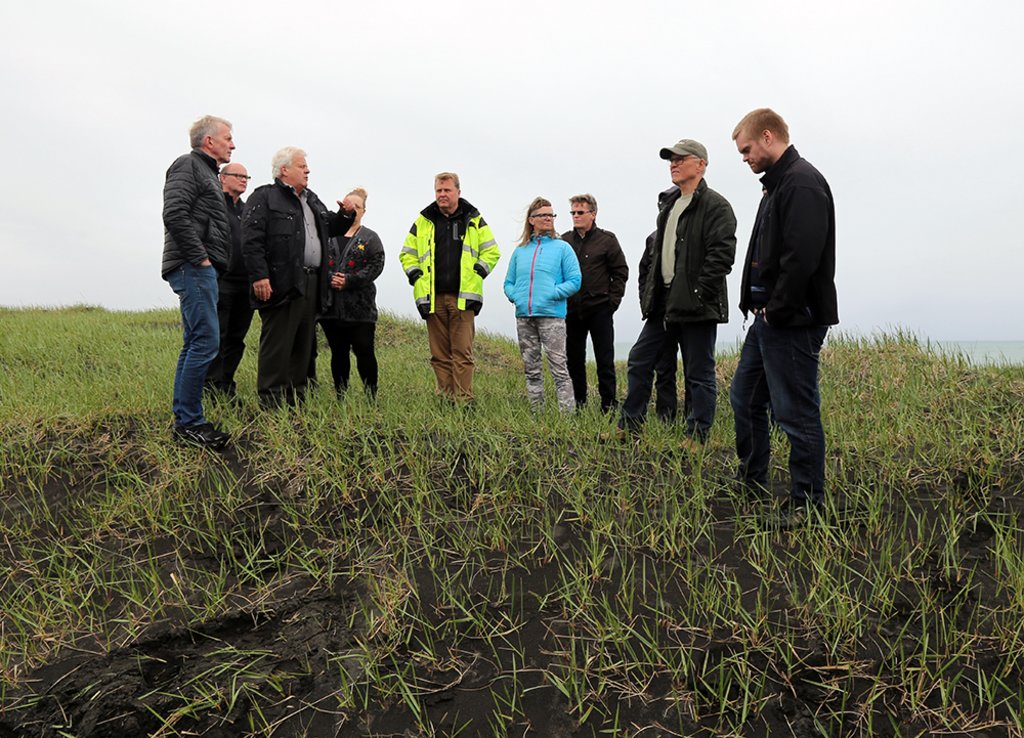Participatory cost-sharing restoration programme [冰岛]
- 创建:
- 更新:
- 编制者: Thorunn Petursdottir
- 编辑者: –
- 审查者: Jan Reichert, Hanspeter Liniger
Farmers Heal the Land
approaches_2599 - 冰岛
查看章节
全部展开 全部收起1. 一般信息
1.2 参与方法评估和文件编制的资源人员和机构的联系方式
有助于对方法进行记录/评估的机构名称(如相关)
Soil Conservation Service of Iceland (Soil Conservation Service of Iceland) - 冰岛1.3 关于使用通过WOCAT记录的数据的条件
编制者和关键资源人员接受有关使用通过WOCAT记录数据的条件。:
是
1.4 SLM技术问卷的参考

Fertilizing and re-seeding degraded rangelands [冰岛]
Rangeland restoration - Spreading small portions of inorganic fertilizer and seeds on degraded rangelands
- 编制者: Thorunn Petursdottir
2. SLM方法的描述
2.1 该方法的简要说明
Collaboration between farmers and a governmental institute on rangeland restoration and improved land management
2.2 该方法的详细说明
该方法的详细说明:
Aims / objectives: FHL is a governmental cost-sharing programme operated by the SCSI and run at national level. The FHL programme has been ongoing since 1990. It started as an experimental programme in Northeast Iceland, but couple of years later it was extended nationwide. It builds on voluntary participation of farmers who want to restore damaged rangelands in the lowland. The programme was established foremost to ease cooperation and strengthen social bonds between the SCSI and sheep farmers. Nevertheless, increased rangeland restoration and improved grazing management were also key targets underpinning the establishment of the FHL initiative, and formed the backbone of its prime policy.
Methods: The FHL programme is run by the Soil Conservation Service of Iceland (SCSI) and targets large-scale rangeland restoration, primarily among sheep farmers. The programme builds on voluntary approaches and uses direct and indirect incentives to motivate its participants. Farmers who want to participate apply for membership of the SCSI. The SCSI evaluates the condition of potential restoration areas and decides if they meet requirements. Each participant receives, annually, a fixed subsidy to purchase fertilizer and if needed, commercial grass seeds. Participants in the FHL project are visited approximately biannually by a regional SCSI advisor that estimates the restoration progress, discusses next steps and consults the participants on rangeland management related issues. Usually, each restoration area is treated for a couple of years before it is considered to have passed the first level of the restoration process. The restoration areas are mapped, and based on the maps participants asked to make a 3-5 year long implementation plan.
Role of stakeholders: As land stewardship plays a vital role in this programme, the role of the primary stakeholders (the farmers) is fundamental. They indeed drive the programme, although they get professional guidance and support from the extension offices of the SCSI. They are responsible for all implementation and land management on a local scale, within their own holdings.
Other important information: no further information
2.3 该方法的照片
2.5 采用该方法的国家/地区/地点
国家:
冰岛
区域/州/省:
Rangarthing Ytra
有关地点的进一步说明:
Rangarvellir
2.6 该方法的开始和终止日期
注明开始年份:
1990
2.7 方法的类型
- 最近的本地倡议/创新
2.8 该方法的主要目的/目标
The Approach focused mainly on SLM with other activities (rangeland restoration, sustainable land management, participatory approaches, stakeholder involvement)
To improve the ecological condition of the degraded rangelands for future generations. To facilitate behavioral changes toward more sustainable rangeland management.
The SLM Approach addressed the following problems: The main problems to be addressed by the approach were severe soil and vegetation degradation that substantially reduced biomass productivity, lack of financial support and local advisory system
2.9 推动或妨碍实施本办法所适用的技术的条件
社会/文化/宗教规范和价值观
- 阻碍
Treatment through the SLM Approach:
财务资源和服务的可用性/可得性
- 阻碍
the approach provides subsidies to participants
Treatment through the SLM Approach:
机构设置
- 阻碍
Establishment of extension offices that provide advisory service on restoration and SLM technologies and approaches, free of charge to all land users.
Treatment through the SLM Approach:
法律框架(土地使用权、土地和水使用权)
- 阻碍
Treatment through the SLM Approach:
了解SLM,获得技术支持
- 阻碍
Establishment of extension offices that provide advisory service on restoration and SLM technologies and approaches, free of charge to all land users.
Treatment through the SLM Approach:
工作量、人力资源可用性
- 阻碍
Treatment through the SLM Approach:
3. 相关利益相关者的参与和角色
3.1 该方法涉及的利益相关者及其职责
- 当地土地使用者/当地社区
Main actors - voluntary work, mostly at their own expenses
- SLM专家/农业顾问
- 地方政府
Provide small scale funding
- 国家政府(规划者、决策者)
Main funding contributor - advisory system - local support
- 国际组织
3.2 当地土地使用者/当地社区参与该方法的不同阶段
| 当地土地使用者/当地社区的参与 | 指定参与人员并描述活动 | |
|---|---|---|
| 启动/动机 | 自我动员 | |
| 计划 | 互动 | |
| 实施 | 自我动员 | |
| 监测/评估 | 被动 | |
| Research | 无 |
3.4 有关SLM技术选择的决策
具体说明谁有权决定选择要实施的技术:
- 主要是SLM专家,咨询土地使用者之后
解释:
Decisions on the method of implementing the SLM Technology were made by mainly by land users supported by SLM specialists
4. 技术支持、能力建设和知识管理
4.1 能力建设/培训
是否为土地使用者/其他利益相关者提供培训?:
是
明确受训人员:
- 土地使用者
- 现场工作人员/顾问
- Researchers
培训形式:
- 在职
- 农民对农民
- 示范区域
- 公开会议
- 课程
培训形式:
- local advisors that visit/contact all participants
涵盖的主题:
E.g. the role of ecosystem services for human well-being, ecosystem resilience and natural hazards, the importance of proper grazing management and the importance of merging local and external knowledge to secure more effective long-term social-ecological progress.
4.2 咨询服务
土地使用者有权使用咨询服务吗?:
是
说明/注释:
Advisory service is very adequate to ensure the continuation of land conservation activities
4.4 监测和评估
监测和评估是该方法的一部分吗?:
是
注释:
bio-physical aspects were regular monitored by project staff through observations; indicators: visual estimation
bio-physical aspects were ad hoc monitored by other through measurements; indicators: Researchers of the SCSI
technical aspects were ad hoc monitored by project staff through observations; indicators: Researchers in collaboration with the SCSI
socio-cultural aspects were ad hoc monitored by other through measurements; indicators: Researchers in collaboration with the SCSI
economic / production aspects were ad hoc monitored by other through observations
area treated aspects were monitored by project staff through observations
There were no changes in the Approach as a result of monitoring and evaluation
There were few changes in the Technology as a result of monitoring and evaluation: Reduced amount of fertilizer and seed when restoration areas are treated
4.5 研究
研究是该方法的一部分吗?
是
明确话题:
- 社会学
- 生态学
提供进一步的细节,并指出是谁做的研究:
Research was carried out both on station and on-farm
5. 融资和外部物质支持
5.1 该方法中SLM组成部分的年度预算
如果不知道准确的年度预算,请给出一个范围:
- 100,000-1,000,000
注释(例如主要的资助来源/主要捐助者):
Approach costs were met by the following donors: government: 78.0%; local government (district, county, municipality, village etc): 2.0%; local community / land user(s): 20.0%
5.2 为土地使用者提供财政/物质支援
土地使用者是否获得实施该技术的财政/物质支持?:
是
5.3 对特定投入的补贴(包括劳动力)
- 农业
| 具体说明哪些投入得到了补贴 | 程度如何 | 对补贴做出具体说明 |
|---|---|---|
| 化肥 | 部分融资 | Up to 85% of the cost of the fertilizer |
如果土地使用者的劳动力是一项重要的投入,那么是不是:
- 自愿
注释:
Voluntary but also subsidies for purchasing inorganic fertilizer
6. 影响分析和结论性陈述
6.1 方法的影响
该方法是否帮助土地使用者实施和维护SLM技术?:
- 否
- 是,很少
- 是,中等
- 是,支持力度很大
Did other land users / projects adopt the Approach?
- 否
- 是,很少
- 是,中等
- 是,支持力度很大
Did the Approach lead to improved livelihoods / human well-being?
- 否
- 是,很少
- 是,中等
- 是,支持力度很大
6.2 土地使用者实施SLM的主要动机
- 增加生产
- 增加利润(能力),提高成本效益比
- 支付/补贴
- 规章制度(罚款)/执行
- 声望、社会压力/社会凝聚
- 加入运动/项目/团体/网络
- 环境意识
- 美学改进
- well-being and livelihoods improvement
6.3 方法活动的可持续性
土地使用者能否维持通过该方法实施的措施(无外部支持的情况下)?:
- 是
6.4 该方法的长处/优点
| 编制者或其他关键资源人员认为的长处/优势/机会 |
|---|
| Builds up trust between farmers and governmental officials. Awareness raising and can facilitate discussions on improved rangeland management |
6.5 该方法的弱点/缺点以及克服它们的方法
| 编制者或其他关键资源人员认为的弱点/缺点/风险 | 如何克服它们? |
|---|---|
| governement pays the most | awareness rising farmers to restore the land |
| government has to trust that the farmer is doing the job | checking in the field (but number of used material difficult to count afterwards und the right time in the spring) |
7. 参考和链接
7.1 方法/信息来源
- 实地考察、实地调查
- 与土地使用者的访谈
链接和模块
全部展开 全部收起链接

Fertilizing and re-seeding degraded rangelands [冰岛]
Rangeland restoration - Spreading small portions of inorganic fertilizer and seeds on degraded rangelands
- 编制者: Thorunn Petursdottir
模块
无模块



